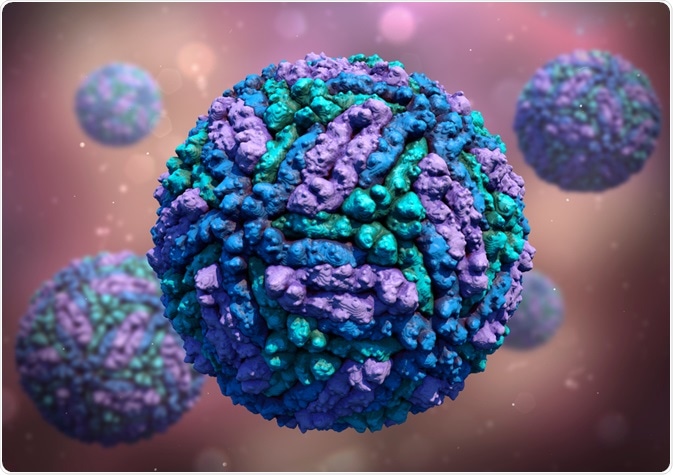Zika fever is an emerging infectious disease of arboviral origin transmitted by mosquitoes of Aedes genus. It presents as an influenza-like disease with a cutaneous rash, but certain complications can ensue. Accumulating evidence of Guillain-Barré syndrome following Zika virus infection does not come as a surprise, as this syndrome is a well-known (although rare) complication of other infections.
 Image Credit: BertrandBlay / Shutterstock.com
Image Credit: BertrandBlay / Shutterstock.com
Definition of Guillain-Barré syndrome
Guillain-Barré syndrome represents an acute autoimmune polyradiculoneuropathy with a wide spectrum of severity. A history of gastrointestinal or respiratory infection three weeks or less before the onset is noted in approximately two-thirds of patients with Guillain-Barré syndrome.
A possible explanation for this association is molecular mimicry – i.e. the immune response directed towards an infectious agent is also directed to the peripheral nerve antigens (such as gangliosides). Less frequently the syndrome can be triggered by immunization, trauma, surgery or bone marrow transplantation.
The most common pathogen in the non-pregnant population associated with Guillain-Barré syndrome is Campylobacter jejuni, followed by cytomegalovirus. Other more commonly encountered infectious agents are Epstein-Barr virus, human immunodeficiency virus, Mycoplasma pneumoniae and Haemophilus influenzae.
The incidence of Guillain-Barré syndrome in pregnancy is estimated to be between 0.75 and 2 in 100,000 (similar to the general population). The condition is more frequently observed in the second and third trimesters, as well as in the first month of the postpartum period.
This syndrome is characterized by progressive weakness that usually affects both proximal and distal limb muscles, with the predilection for respiratory and truncal musculature. Reflexes are most often absent early in the course, and facial neuropathy is observed in 70% of patients. Sensory symptoms are also present, including severe pain in certain subsets of patients.
Zika-related Guillain-Barré syndrome
Underlying pathophysiological mechanisms of Guillain-Barré syndrome linked to Zika virus are unknown, although immunological reactions described with other pathogens could have the same putative role. Furthermore, there is no valid explanation for the emergence of this complication that was previously not related to Zika virus; one theory is that the virus genetically evolved to a more pathogenic genotype.
The link between Zika virus and Guillain-Barré syndrome is further supported by cases of Guillain-Barré syndrome documented after dengue virus infections, which is another flavivirus transmitted by Aedes mosquitoes. Moreover, the simultaneous outbreaks of type 1 and 3 dengue fever could also act as a predisposing factor during Zika fever.
Guillain-Barre Syndrome and Zika: Is There a Connection?
Zika-related Guillain-Barré syndrome was initially described in 2014 during an outbreak in French Polynesia. From 8,262 suspected cases of Zika virus infections, 38 cases of Guillain-Barré syndrome followed an illness that was suggestive of Zika. Such clustering of Guillain-Barré syndrome cases was quite unusual when compared to a yearly average of approximately 5 cases in French Polynesia.
After the epidemic was confirmed in north-east Brazil in May 2015, unexpected increases of the syndrome were reported in different countries of South and Central America. Guillain-Barré syndrome frequency above the baseline was noted in Brazil, Colombia, French Polynesia, Suriname and Venezuela, which further supports the possible role of Zika virus as a trigger.
Guillain-Barré syndrome related to the latest Zika virus epidemic disproportionally affected young (between 20 and 40 years of age) and relatively healthy individuals, with particularly severe clinical presentation that often left residual neurological problems even six months later.
In all cases of Guillain-Barré syndrome, multidisciplinary measures are warranted in order to prevent potentially fatal complications. Almost a quarter of patients who are unable to walk will need mechanical ventilation, with close monitoring of the vital capacity and respiratory rate. Despite a generally favorable prognosis, there is a 5% mortality rate and 20% disability rate.
References
Further Reading